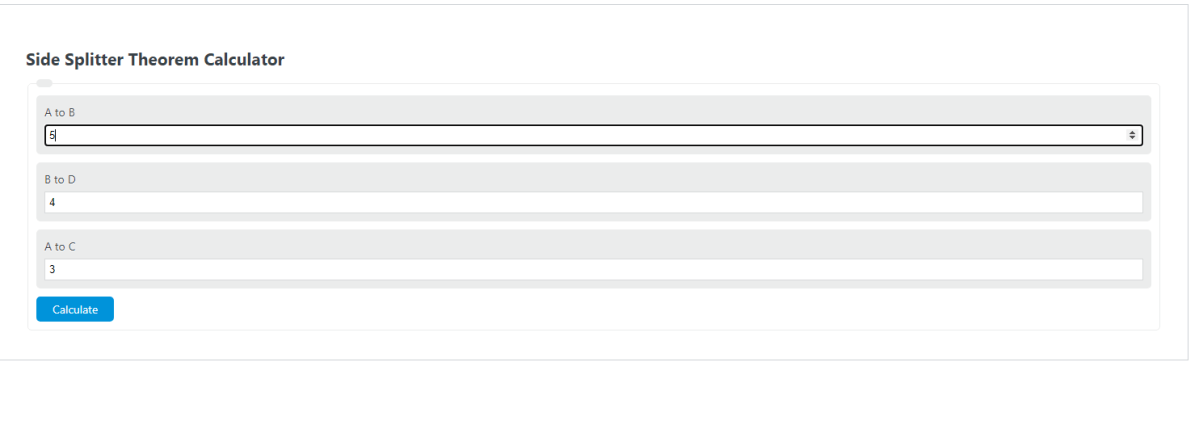Enter the length of lines A to C, C to E, and A to B from the diagram into the calculator to determine the length of B to D using the side-splitter theorem.
Side Splitter Theorem Formula
The following formula is used to calculate the missing length of a triangle that has been split by a line parallel to its base.
AC / CE = AB / BD
CE = AC * BD / AB
- Where AC , CE, AB, and BD are the point-to-point lengths shown on the triangle below.

To calculate the side splitter theorem, multiply the distance from A to C by the distance from B to D, then divide by the distance from A to B.
What is the side splitter theorem?
Definition:
The side splitter theorem is a mathematical property in geometry that says the lengths of the sides of a triangle that have been split by a line parallel to the base of the triangle will be directly proportional.
How to calculate side splitter theorem?
Example:
The following example shows the steps and information needed to calculate the missing length of a triangle that has been split.
First, determine the lengths A to B in the triangle above. For this example, the length is found to be 5.
Next, determine the length B to D. In this case, that length is 4.
Next, determine the length A to C. For this problem, that is measured to be 3.
Finally, calculate the missing length C to E using the formula above:
CE = AC * BD / AB
CE = 3 * 4 / 5
CE = 2.4
